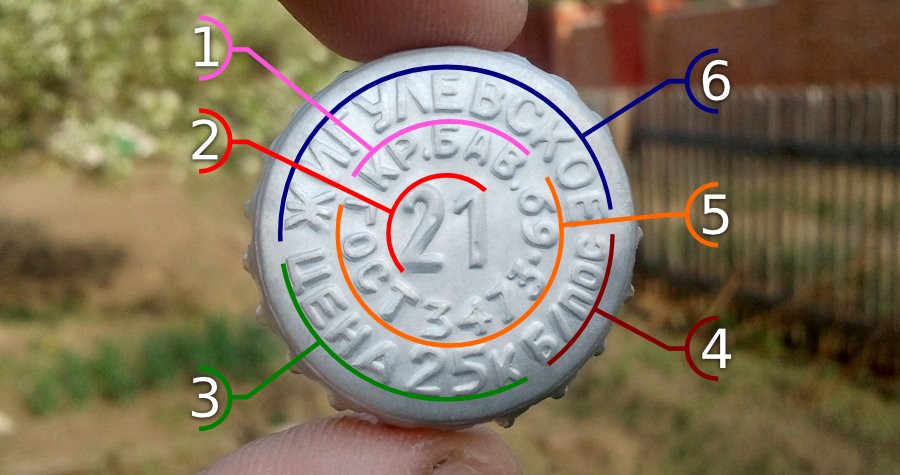
- Кр. Бав. – Name of the factory, here «Red Bavaria» (in Russian «Красная Бавария»).
- 21 – The day of the month the beer was produced. An expiration date for freshly made beer was usually short (3 days), which is why only a day number (no month, no year) was shown on the crown cap. In theory it is possible to collect 31 different numbers. There were other types of calendars, consisting of months, decades, or years, but the daily calendar was most common.
- Цена 25 к. – The price of the beverage in kopeks (1 kopek = 1/100 of a ruble, the currency unit of the U.S.S.R.). At first glance the price looks low, but considering today's scale of prices, the cost is about the same as in today’s currency (but of course that beer was alive, without today’s preservatives!).
- Б/Пос. – «without glass» (in Russian «Без посуды») This means that the glass container was not included in the price. A typical bottle cost 12 kopeks. Bottles were re-used many times.
- ГОСТ 3473-69 – The Standardized ID!.
- Жигулевское – «Zhigulevskoye», the name of the most popular brand of beer in those times.

How will this cap be coded in the catalog?
The left portion of the code (before the hyphen) identifies the producer. The first two symbols after that indicate the code of the republic (Russia, in this example). The next pairs of symbols describe, respectively, the proper region, city, and factory (Leningrad obl. region, Leningrad city, and Red Bavaria brewery in this instance).
The right portion of the code defines variation or calendar (here first 0 means aluminum cap, number 006). The portion of the code pertaining to the calendar is absent in this variation (hence the code is just RU370103-0006). A crown showing calendar information has extra digits after the dot, depending on what that information (day, month, or year) is shown. Here it is 21, for the day of the month.
